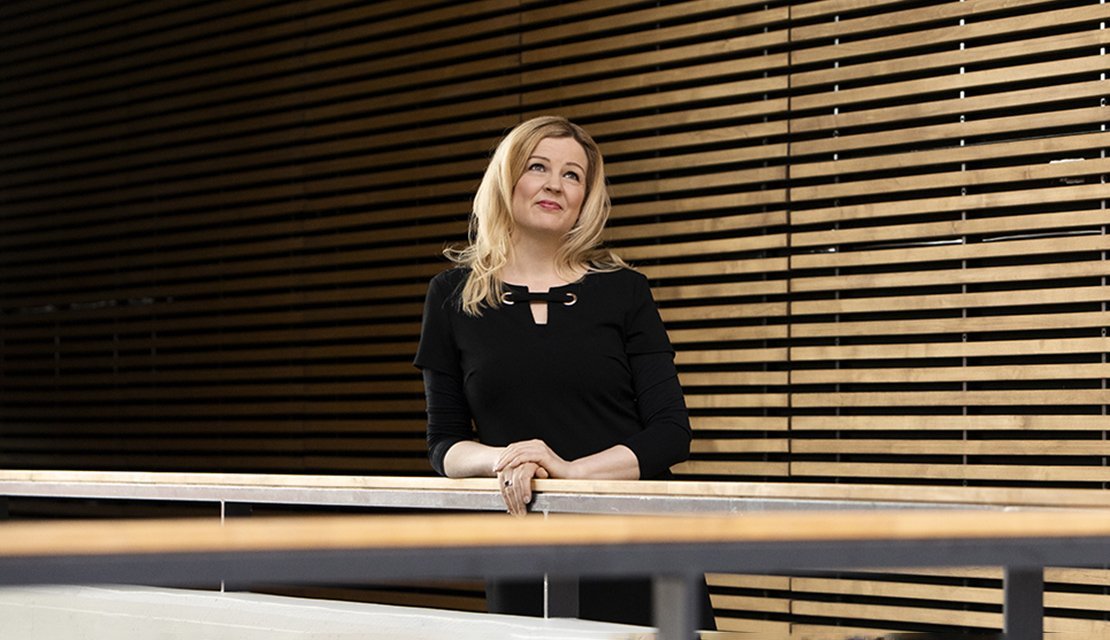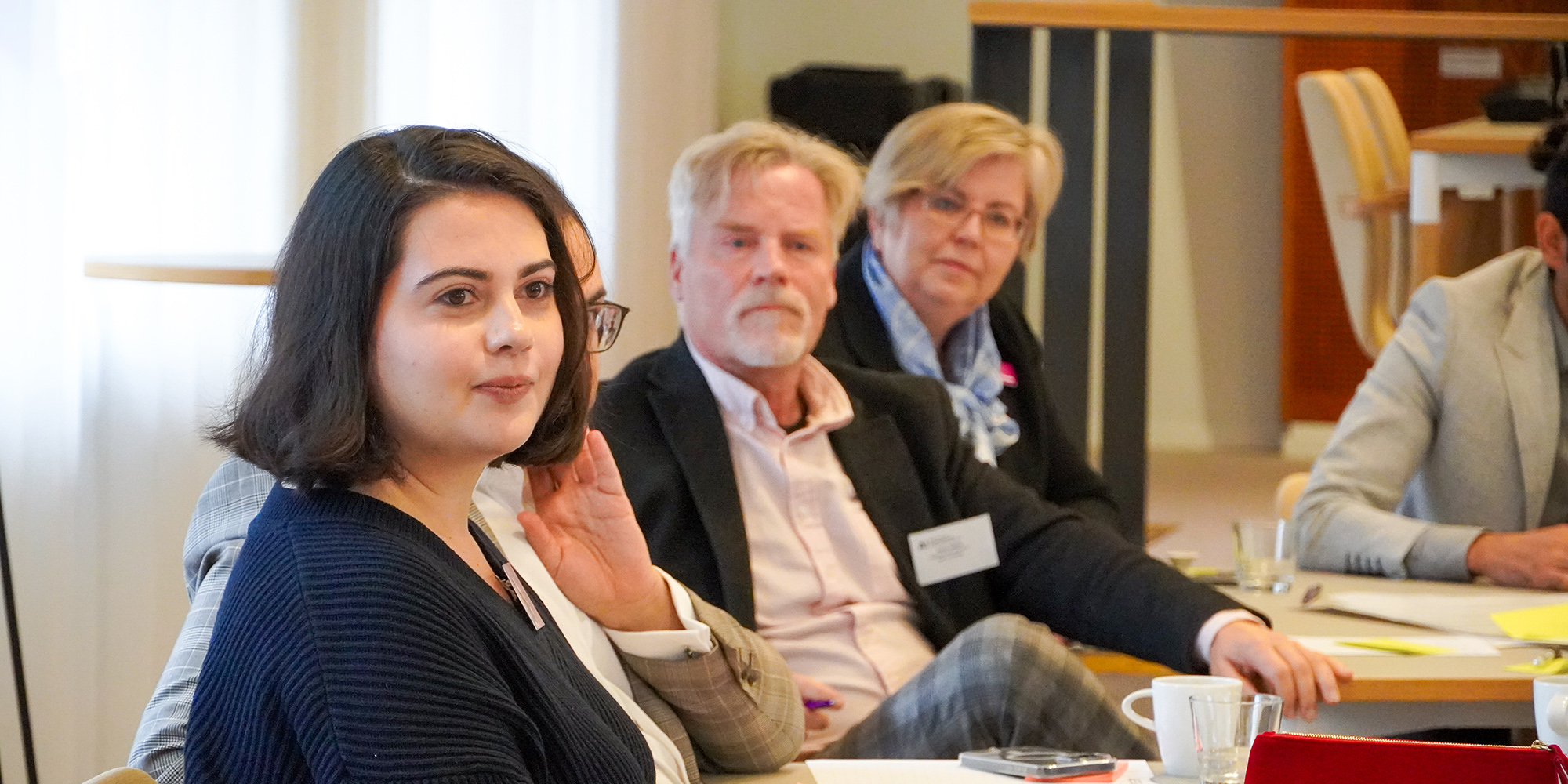“A one-size-fits-all model for organizing and managing hybrid work doesn’t exist,” says Assistant Professor Niina Nurmi from Aalto University. In other words, waiting for a study to provide a clear blueprint for striking the perfect balance between remote and in-office work is not helpful.
However, the question a leader must address along with the team is how to align tasks with the most suitable location and technology.
The key is to organize the work based on tasks rather than catering to individual preferences of spending two, three, or four days at the office. “Work should be structured based on tasks rather than individual preferences,” says Nurmi.
Work should be structured based on tasks rather than individual preferences."
Each team must be guided to break down their work and identify tasks that are best done individually in a peaceful setting. They should also identify tasks and stages of work that make sense to carry out in the same space so issues can be solved on the spot and changes coordinated face-to-face.
“The location is chosen according to the goal of each task,” Nurmi summarizes.
Hybrid work brings flexibility in working life but requires managers to ensure that work is organized considering employee well-being and productivity.
Nurmi is aware from previous studies that remote work doesn’t necessarily accelerate work processes, even though it eliminates transitions between home and the workplace. In fact, virtual collaboration slows down certain aspects, such as the coordination of interdependent tasks.
“I’ve been studying virtual teams for over fifteen years. Research indicates that the schedules of virtual teams tend to get extended due to delays in coordinating interdependent tasks. In remote work, this type of coordination needs to be done mechanically by communicating separately, scheduling additional meetings, or sending messages,” Nurmi explains.
Managing interdependencies becomes emphasized in remote work."
On-site, issues are resolved organically through casual conversations in the corridor, agreeing things informally, solving a problem while chatting over an office partition, and reorganizing and rescheduling without the need for formal meetings or sorting out a suitable time for a Teams meeting.
In other words, a team leader needs to analyze both tasks and their interdependence. "If I can’t continue because my colleague hasn’t finished yet, my work will be delayed. Managing these interdependencies becomes emphasized in remote work; they need to be identified and used as a basis for realistic scheduling.”
|
|
| Niina Nurmi advises hybrid leaders to establish trust and to consider their level of trust in their own team. "Do you tend to micromanage because of your need for control?" |
Social skills are emphasized in leading hybrid work
Nurmi mentions another key point that managers need to consider regarding remote work: corporate culture and cohesion.
“Many have been surprised to find that the longer they work remotely, the more socially distant they become. Workplace relationships are human relationships, which begin to deteriorate in a remote work environment. Without fostering the team spirit, it can easily become extinguished.”
Without fostering the team spirit, it can easily become extinguished.”
In order to lead hybrid work effectively, social skills are essential. According to Nurmi, listening and considering the other person’s viewpoint becomes emphasized. Empathy is necessary to understand how individuals differ in their adoption of new technologies, for example.
In a remote meeting, it’s the leader’s responsibility to ensure that everyone is heard and that the quieter participants are given space. The leader also has a say over whether cameras are on or off. When a culture has evolved during a period of rapid change without explicit agreement, altering it requires strong interpersonal skills.
What leadership style is a match for hybrid work?
Nurmi approaches the issue through a dichotomy of task management versus relational leadership.
“Task management is typically no problem, but what about relational leadership? It’s the harder part. Servant leadership plays a crucial role in identifying the specific support each individual requires in their work.”
Nurmi advises managers to reflect on their personal need for control and a level of trust in their team members. “Do you tend to micromanage because of your need for control?” It is crucial to establish trust, particularly when working remotely.
Hybrid work practices and technological solutions will continue to develop in the upcoming years. Teams have already adopted various virtual platforms, such as online whiteboards, shared virtual meeting rooms, and spaces for collaborative work, brainstorming, planning, and learning. A simple way to foster a sense of togetherness is for all participants to keep their Zoom cameras on while working at their own pace. It’s a handy way to ask questions, exchange ideas, and catch up with one another, much like the spontaneous chats around the coffee machine.
Re-Imagining Hybrid Leadership
We asked Niina Nurmi how to make hybrid arrangements work and what the key competencies managers need to master hybrid leadership.
How to make hybrid arrangements work?
Organizations need a range of practical tools and guidelines that enable leaders and employees to build team cohesion, trust, and engagement for improved performance and well-being in hybrid work.
1. One key aspect is to build leadership skills for establishing clear expectations, norms, and guidelines that support team performance and employee wellbeing in hybrid work.
2. It is essential to select and use communication media strategically to suit the unique requirements of different tasks. This includes guidelines for developing communication skills to effectively prevent and resolve conflicts, along with a communication plan to ensure seamless information flow.
3. In a hybrid environment, most teams need team-building activities designed to foster a positive climate and promote healthy team dynamics in hybrid and virtual teams. These activities aim to enhance social interaction, encourage collaboration, and create opportunities for remote workers to connect with their colleagues and build high-quality relationships.
4. Leaders need to ensure employees – and leaders themselves – thrive in hybrid work arrangements. This includes establishing clear boundaries between work and personal time and communicating them to colleagues.
5. It is necessary to continuously evaluate and adjust work habits and routines to optimize productivity and well-being in hybrid work.
What are the key complexities companies face as they figure out what hybrid means for them?
As companies transition to hybrid work models, they may face complexities related to information flow, organizational cohesion, employee engagement, and burnout that need to be recognized.
1. Hybrid work can hinder information flow if it creates communication barriers or leads to information silos. Remote team members may miss out on impromptu conversations or social interactions that occur in the office, which can limit their exposure to important information and updates.
2. Hybrid work can have negative effects on organizational cohesion. For example, remote workers may feel disconnected from the organization and their colleagues, which can lead to feelings of isolation and reduced engagement. This can weaken organizational cohesion as employees may be less committed to the organization’s goals and less willing to collaborate and communicate with their colleagues. Experiences of inequality may also increase within an organization, where in-office employees have greater access to resources and opportunities than remote workers.
3. Another challenge that companies need to manage when they implement hybrid work policies is employee engagement. On one hand, hybrid work can provide employees with greater flexibility and autonomy, which can increase their engagement and motivation. On the other hand, hybrid work can also lead to feelings of isolation and disconnection from the organization and team.
4. Hybrid work can make it harder for managers to provide regular feedback and recognition to remote workers. Some remote workers may also struggle to assert themselves in virtual meetings and maintain mindful engagement with their colleagues.
Burnout is a potential threat to hybrid workers’ work-life balance. How to tackle the risk?
Leaders can help employees manage burnout in a hybrid work setting in several ways.
1. It is important to encourage employees to set boundaries. Leaders should set clear expectations around when employees are expected to be available for work and when they are free to disconnect. This will allow employees to switch off from work during their non-working hours, which can help prevent burnout.
2. Offering flexible schedules is another effective way to help employees manage burnout. Giving employees the flexibility to choose their work schedule and adapt it to their needs can help them better manage their work and personal responsibilities.
3. Leaders should organize virtual and in-person team-building activities to help employees feel more connected and engaged with their work and colleagues.
4. Encouraging open and honest communication between team members is essential for identifying potential burnout triggers and addressing them before they become bigger issues. Leaders should encourage employees to communicate openly about their workload, stress levels, and other concerns that affect their work.
What are the key skills and competencies that managers need to make the hybrid model work?
The following set of skills and competencies ensure a smooth transition from traditional office work to a hybrid work environment:
1. Designing and implementing effective hybrid work policies and practices.
2. Planning a strategic use of technology and developing communication skills for using various communication channels.
3. Developing change management skills and promotion of positive work culture that fosters engagement and productivity.
4. Using empathy to understand employees’ unique needs and work styles to ensure that they have the resources and support they need to succeed.
5. Managing conflicts and navigating ambiguity and complexity in a hybrid work environment.
6. Building trust and psychological safety for effective knowledge sharing and innovative performance.
Niina Nurmi was conducting research on remote work long before the pandemic
Niina Nurmi developed an interest in remote work – or virtual teams and communities of people working in separate physical locations – two decades ago. Although the discussion around remote and hybrid work gained momentum during the COVID-19 pandemic, international companies were already hiring employees based in different countries before that.
As a Human Resource Manager of a global startup in the early 2000s, Nurmi witnessed how new recruits around the world were finding it difficult to adopt the company’s values and operating methods. To address this issue, she coordinated onboarding weeks to introduce new recruits to the corporate culture and colleagues in a joint physical setting. As the startup continued to hire new people, the HR manager was naturally concerned about everyone being aligned with the company’s goals and ensuring the company was supporting the employees worldwide.
"I wanted everyone to get to know the company and each other. It meant meeting up and spending time together."
After transitioning to the academic world, Nurmi began to study distributed work and virtual teams. She is an Assistant Professor at the Department of Industrial Engineering and Management at Aalto University and continues her research on global virtual teams – now commonly known as remote and hybrid work.






















